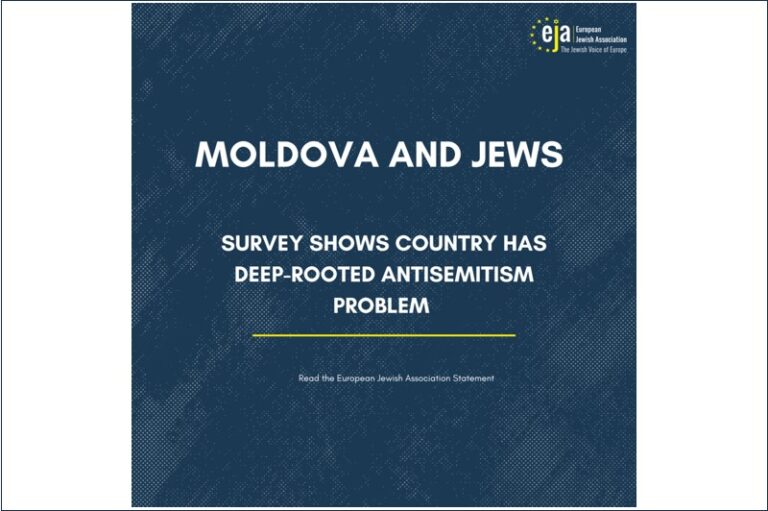Dr. Manfred Gerstenfeld
The Office for the Security of the German Federal State of Hessen has published a report on antisemitism on the German internet, authored by Ann-Christin Wegener. The study focuses on the manifestations and ideological background of antisemitic agitation on social networks in Germany.
Wegener wrote that the German authorities usually claim that 90% of antisemitic incidents are caused by the extreme right. She suggests that this results from the way the police report antisemitic incidents. As long as nothing is known about the motivation or the perpetrators, these incidents are labelled as right wing politically motivated.
Hate crimes committed in the Arabic or Turkish languages lead to less complaints than those in German. One has to also take into account the fact that many antisemitic incidents are not reported or do not result in complaints. It is estimated that less than a quarter of Jewish victims of antisemitism
bring complaints to the police or to the Jewish community.
The author remarks that very little attention has been given to antisemitic crimes and attitudes of Muslims in Germany. She refers to some incidents which received much public attention. One of the most extreme was the severe beating of a rabbi in Berlin in 2012. Two years later anti-Israeli demonstrators shouted “Hamas, Hamas, Jews to the gas” in several German towns. Another incident which received much publicity took place in the Spring of 2017 when a Jewish boy quit his Berlin school after being severely harassed by Muslim pupils. Wegener writes: “All this says little about the quantitative comparison between antisemitism among Muslims and among the right.”
Muslim antisemitism in Europe has been greatly under-researched. Many authorities have tried to keep statistical data and other information about antisemitic attitudes among Muslim immigrants and their descendants out of the limelight. This has occurred despite the fact that all resolved murders
of Jews in Western Europe in the past decade have been committed by Muslims. The same is largely true for other extreme antisemitic incidents. Among these are serious attacks on synagogues in France.
One classic example among many of hiding such information occurred in 2003. The Center for Research on Antisemitism at the Technical University of Berlin (CRA) completed its study on European antisemitism. It had been charged to prepare this report by the European Monitoring Centre on Racism and Xenophobia (EUMC). (This organization was replaced by the European Union Agency for Fundamental Rights, FRA in 2007.)
The CRA identified young Muslims of Arab descent as the main perpetrators of physical attacks against Jews and the desecration and destruction of synagogues. The EUMC did not publish the study. The CRA stated that the reason for not publishing the document was thar it exposed the many Muslim perpetrators of antisemitic incidents. They also mentioned that the EUMC had repeatedly asked them to change their findings. At the end of 2003, the World Jewish Congress published the CRA draft report on the Internet, thereby exposing the EUMC’s manipulation.
Against this background and various other manipulations of the truth , Wegener’s study is particularly important. The author investigates antisemitism on the German internet. She selected several prime sources. These included the Facebook accounts of the largest German daily, Bild and of Focus, one of the three leading weeklies. She also researched Youtube channels with a greater audience than Twitter.
Wegener came to the conclusion that as far as Israel and the conflict in the Middle East are concerned, the Spiegel TV website was the main outlet of antisemitic content. She found that Israel and the Middle East conflict were incomparably more prevalent on these internet sites than the subject of German Jews.
Wegener used a number of keywords in her research as follows: Jews, Judaism, Jewish, Israel and antisemitism. Her detailed study, which is only available in German, reaches a number of important conclusions. Concerning comments about Jews or Judaism, those of Muslim origin and those from the extreme right were about equal in number. Wegener also found that public discourse both on Judaism and on Israel in German social media contains a substantial amount of antisemitism.
Wegener concluded that antisemitic comments have greatly increased since 2014. She observes that the Gaza conflict and the following anti-Israeli demonstration prepared the ground for this.
Concerning Israel and the Middle East conflict, about half of the antisemitic comments are made by people with a Muslim background. Only 10% came from the right. The origin could not be identified in 40% of the cases. Between 2010 and 2013, however, 37% of antisemitic comments were from the right, and 16% were made by people from Muslim backgrounds. Wegener concludes that hatred of Israel in the German Muslim community is rising.
As far as antisemitism and the Holocaust are concerned, among almost all those who reported negation of Holocaust guilt and the need for remembrance, the right was dominant and Muslims were much less
so.
There is one consideration which must lead the reader to a somewhat different conclusion. No sites in Arabic or Turkish were investigated. On those virtually all antisemitic remarks come from Muslims. Thus, Muslim antisemitism on the German internet exceeds that of the extreme right.
Wegener’s prime conclusion is that society, politicians and intelligence services must include looking at antisemitism among Muslims without neglecting the antisemitism of the right. Such an observation is unpopular among substantial parts of the German mainstream and even more so among the country’s left.





